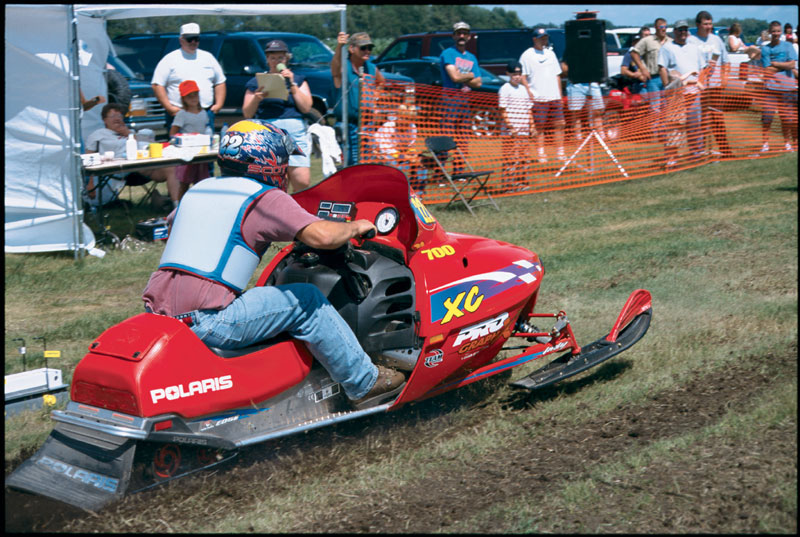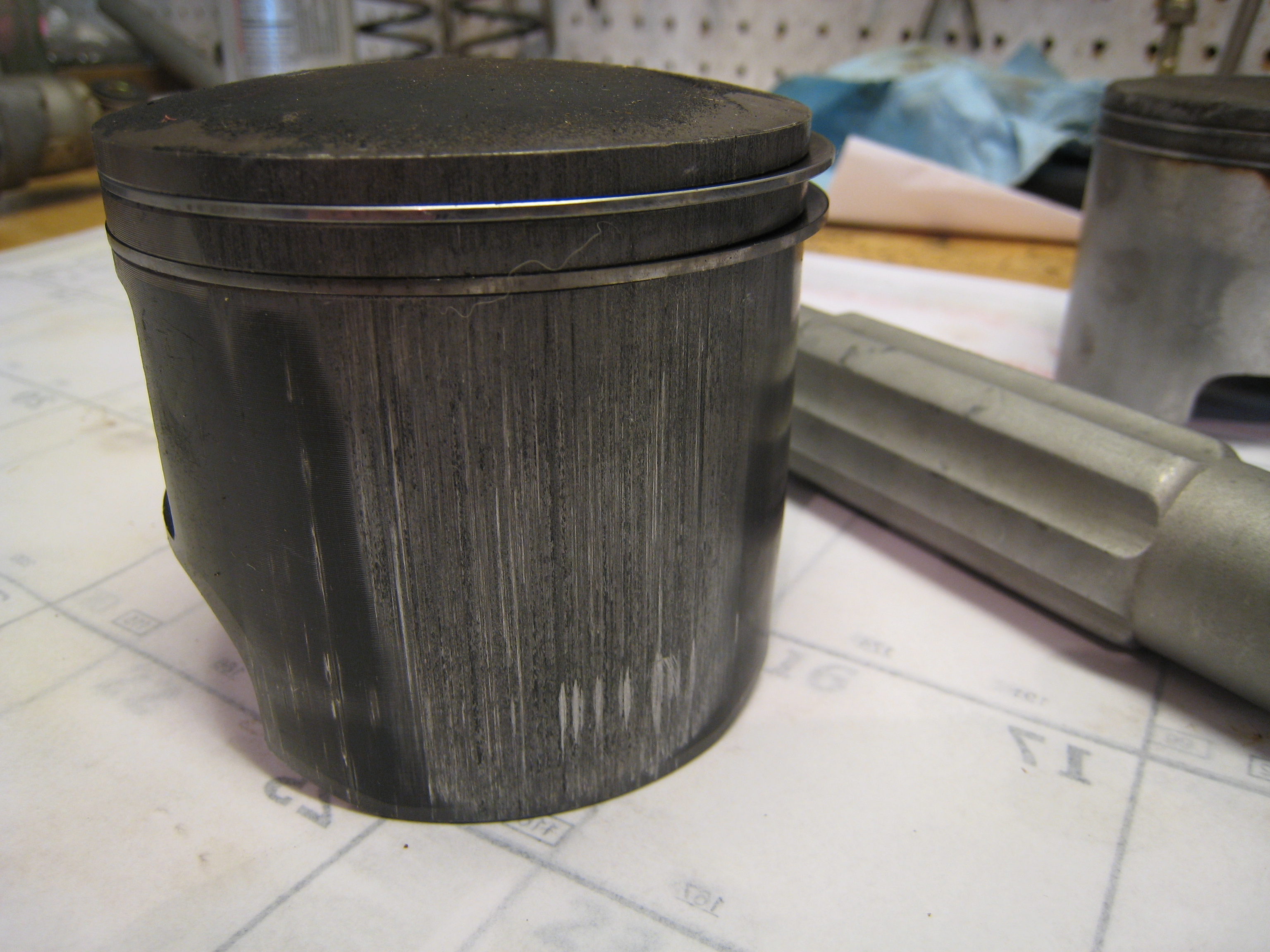How to Make Your Snowmobile Last Longer
 We’ll post the full list on snowgoer.com next month, but to get the the full “How To” story and pictures now, pick up the season premier issue of Snow Goer magazine on newsstands now.
We’ll post the full list on snowgoer.com next month, but to get the the full “How To” story and pictures now, pick up the season premier issue of Snow Goer magazine on newsstands now.
In these “uncertain economic times” with home values in the tank, wages frozen or falling and energy costs on the rise, we’re all looking for ways to stretch a dollar as far as it can go. And with some snowmobiles costing more than $10,000, the machines represent a lot of dollars to stretch.
Sleds are a big investment, but good care will extend a machine’s life and maintain high resale value when you decide to upgrade. Keeping a snowmobile in good working order isn’t that difficult. Whether it’s new or used, following this list of simple — but often-forgotten — tips will help extend its life, while maintaining good mechanical condition and a like-new appearance.
1. First, break-in the sled
No single action on your part will extend your snowmobile’s life more than proper break-in; most importantly, the engine. The first tank of fuel for most sleds with a two-stroke engine should be pre-mixed, though ratios vary based on the manufacturer. Add oil to the first tank of fuel after a rebuild, too. Use the whole throttle range during break-in, and don’t hold it at a steady engine speed for more than a few seconds at a time. Doing this will properly seat the piston rings through exposure to varied cylinder pressures.

2. Follow a maintenance schedule
Maintenance is the next most-important step to achieve long life. Whether you perform your own service or hire someone else to do the repairs, follow a regular schedule. Wear components must be checked, bolts and fasteners should be inspected and clutches should be cleaned, if not rebuilt. If you bring your sled to a shop for a check up, don’t just assume the mechanic will give it a thorough check over; ask the shop for a specific list of what its tune-up includes. Do a little math by taking the “tune-up” price and calculating how much time the mechanic will spend servicing your snowmobile, based on the shop’s hourly labor rate. If the special price only covers 30 minutes, for example, it might not be worth it. If that’s the case, find another shop that will perform more work for your money.

3. Give it a bath
Wash your sled after you return from a trip, and when you prep it for summer storage (you do “prep” your snowmobile for storage, don’t you?). This helps prevent rust and corrosion on the metal components by rinsing away road salt that collects while trailering. Wash away any grease or oil that might accumulate from spills, gasket leaks, etc. Always let the sled dry off after a bath and run it on a jackstand to get rid of any water in the clutches, bearings or suspension shafts. Another good reason to wash a snowmobile is that it’s inevitable that you’ll spot other things that need to be repaired.

4. Protect your sled during the off-season
Put your machine away for storage correctly by adding fuel stabilizer, fogging the engine, greasing all of the zerks and raising the track off the ground and unhooking the torsion springs. If you can elevate the skis, do that, too, to extend spring life up front. Faded, rusted components and damage to plastic and vinyl will happen if a snowmobile sits outside in the elements. Store it indoors in a dry and clean location and keep the sled covered to protect the metal, plastic and vinyl surfaces.
5. Prevent corrosion
As part of your long-term storage preparation, spray the front and rear suspension, including shocks, with WD-40 or similar product. If your skis are steel, spray them, too. Open the hood and spray metal parts in there, but make sure the rust inhibitor doesn’t come in contact with the belt and clutches, otherwise they’ll slip.
6. Use high-quality engine oil
Many snowmobilers wonder what oil they should run through their sled’s engine. Snowmobile manufacturers perform extensive tests on their engines with various oil formulas to achieve optimum durability, cleanliness and run quality. Arguably the safest — but perhaps the most expensive — route is to use the manufacturer’s recommended oil. There are quality oil products available from the aftermarket, too. Check with your dealer to see if it recommends any aftermarket oil for your sled. Stay away from outboard or motorcycle oil because it isn’t formulated for cold-weather use. Always use the recommended weight and viscosity for four stroke engines.
7. Improve your hauling techniques
Cover up your sled whenever you haul it down a road. An enclosed trailer is the best way to keep road grime off of it, but if that isn’t an option, use a quality cover that wraps the machine for complete protection. You can even put a bed sheet under the hood to further protect engine and clutch components from the elements. Shields on the front of trailers also help keep grime off of sleds.
8. Warm up the engine
When it’s time to ride, let a cold engine idle for a few minutes before you rev it up and hit the trail. Engine parts are made of different materials, so they heat up and expand at different rates. For example, the properties of aluminum allow it to warm faster than steel. If an aluminum piston warms up and expands too quickly inside the steel cylinder, the clearance between them will become too tight, which could cause the piston to seize within the cylinder. At the least, the piston will suffer scratches on its skirt, which will reduce compression and engine life. At the worst it will lock up and the pistons will need to be replaced due to deep gouges. Some four- strokes have a light on the dash that turns off when the engine is warm. Also, some manufacturers alter the engine timing through the engine’s computer to protect the engine from damage when it’s cold.
9. Keep the drivetrain rolling freely
The drivetrain is a common area for failure and can be expensive to repair. To help it live a long and fruitful life, keep fresh oil in the chaincase and make sure it’s filled to the proper level. The lube should be changed annually, or about every 1,000 miles. Keep the chain adjusted to the manufacturer’s recommendation. A chain that is too loose can slip off the gears and cause damage; one that’s too tight can cause bearing damage and may cause the chain to break. Jackshaft and driveshaft bearings should be greased a few times each season and before summer storage.
10. If it gets hurt, stop the bleeding
What can you do if your sled already has some damage, and you don’t want to throw a bunch of money at it to make repairs? There are a few ways you can prevent the problem from getting worse or damaging other components. For example, if the windshield or hood has a crack, drill a small hole at the end of the crack. This will prevent it from extending. If the track is frayed on the edges, use a handheld propane torch to burn the frayed edges. This, of course, must be done carefully. Make sure flames have been extinguished before you move on to another job. If the seat is torn, fix it with a vinyl repair kit to prevent further damage and to keep the foam dry. A rusty pipe is common, especially on older sleds. Stop corrosion by sanding the pipe and blowing on a coat of high-temp paint every season.





